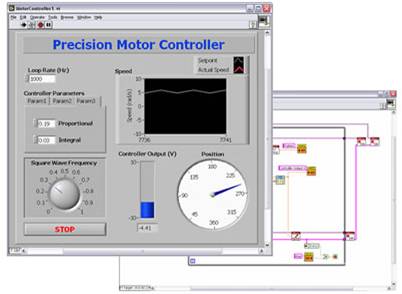Software modules LabVIEWThat we use most often in your projects
The graphical programming environment LabVIEW has more than a thousand built-in functions for processing and presenting data, filtering signals, performing spectral analysis and transferring data using standard protocols. To solve specific highly specialized tasks, there are program modules and LabVIEW toolkits. Such modules in LabVIEW are more than 40. The range of tasks that allow to solve LabVIEW modules is very wide, from signal processing and analysis of measurement data to development of high-frequency systems and satellite navigation systems. In our work, we often use modules for the development of real-time systems, programming on FPGAs, analyzing and presenting data, performing measurements in the field of electric power engineering and developing vision systems.
A more detailed list of additional software modules to the LabVIEW, which we use most often in our projects is given below.
NI LabVIEW Real-Time Module
|
|
A brief description. A software module is designed for the development of systems operating in real-time - systems performing operation exactly at a certain time and a guaranteed time interval. Detailed description. There are a number of problems that require a well-defined execution time of an operation. This mode of operation is called a real-time, and systems operating in this mode - Real-time systems. An example of a real-time system is the car's airbag (during its operation should be strictly defined, and deviations from this execution time allowed) or high-speed servo control system. |
| The LabVIEW Real-Time module allows you to create full-featured applications for a real-time operating system using the LabVIEW graphical development environment. The module is designed for use on hardware platforms such as the: PXI, Compact FieldPoint, FieldPoint, CompactRIO, and PC. |
|
|
NI LabVIEW FPGA Modules |
|
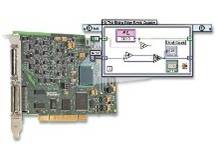 |
Short description. The software module is designed to develop systems based on programmable logic integrated circuits (FPGAs or FPGA). Systems based on FPGAs combine high-speed data processing, guaranteed time of the operation and the possibility of organizing an independent parallel execution of multiple tasks. Detailed description. Systems based on FPGA are becoming more and more common in rapid processes control problems, high speed signal processing, multi-channel synchronized measurement with the value of de-synchronization between the individual channels about 100 ns. |
|
The module has a number of possibilities:
|
|
| NI LabVIEW Electrical Power Suite | |
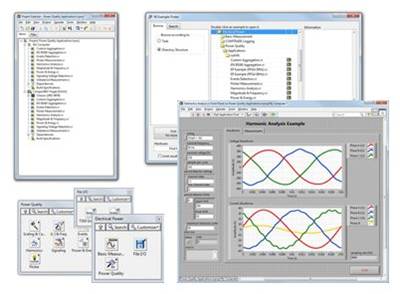 |
Detailed description. The module for the development of systems for measuring, monitoring and power quality in single- and three-phase electrical networks.The module includes analysis functions for the following values:
|
| NI LabVIEW Electrical Power Suite allows you to build a complete system for analyzing power quality indicators. | |
| NI Vision Development Module | |
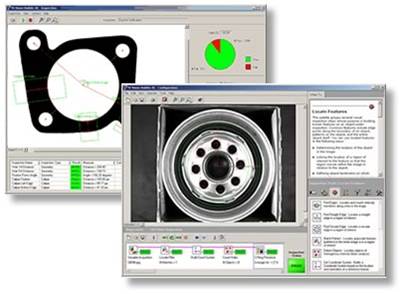 |
Short description. Module for the development of vision systems. Vision systems can solve the problem of automated analysis of the shape, color, size of objects.NI Vision Development Module is designed to help in the development of machine vision applications and applications for image processing using graphical NI LabVIEW programming environment for Windows and real-time OS and programming languages C, C ++, C # and Visual Basic .NET for Windows . The module allows you to collect data from the cameras with GigE interfaces, IEEE 1394, USB. |
|
Possible application of systems designed using the NI Vision Development Module: packing quality assessment on a conveyor, sorting objects by color or size, determine the number of objects. It is very successful in these human problems can replace the vision system consisting of cameras with lighting system and specialized software that implements the required functionality.
|
|
NI LabVIEW Database Connectivity toolkit |
|
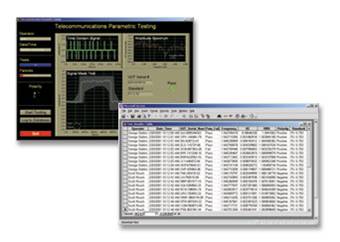 |
Detailed description. LabVIEW Database Connectivity toolkit module is designed for building applications to interact with the local and remote databases. Contains a set of functions, eliminates the need for using SQL database queries written. It provides the ability to connect to most types of existing databases such as Microsoft Access, SQL Server, Oracle. In addition, it allows you to complement the functionality of the standard functions of SQL applications. |
|
The main functions:
|
| NI LabVIEW Wireless Sensor Network (WSN) Module | |
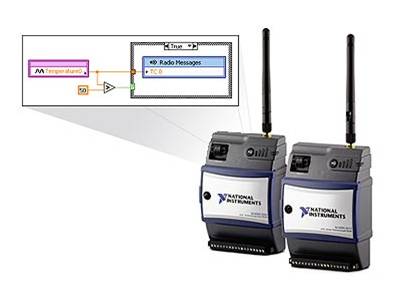 |
Detailed description. The module for the development of systems for collecting and processing data from devices operating in the wireless sensor networks (Wireless Sensor Network, WSN). It allows you to design applications for WSN-powered devices and ZigBee protocol provides remote wireless measurement at distances of up to 300 m. |


